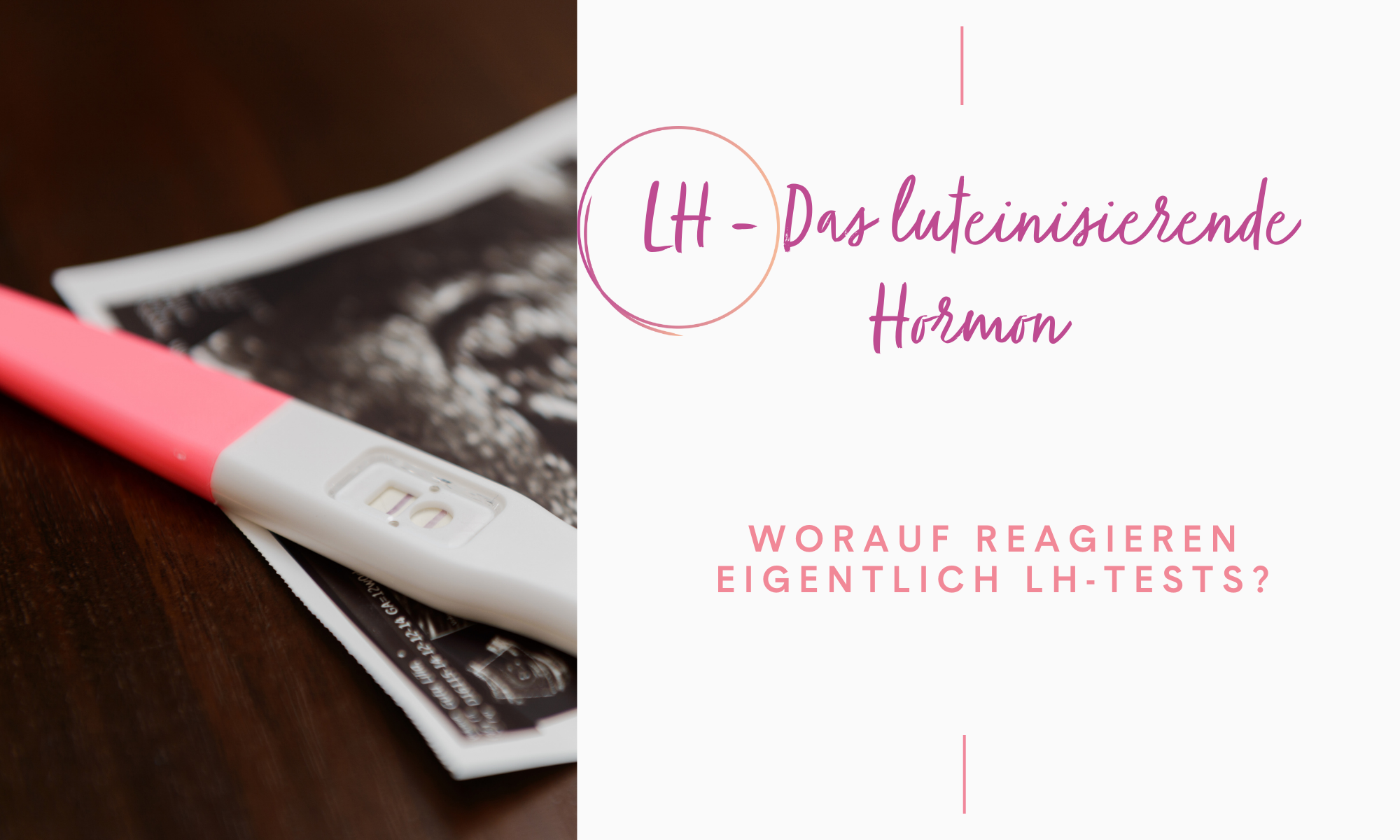
Luteinising hormone - What do LH tests react to?
he luteinising hormone (LH) plays a key role in women's reproductive health by triggering ovulation and regulating the menstrual cycle. We explain the basics - what is LH, how do LH tests work and are they reliable?
What is luteinising hormone (LH)?
The luteinising hormone (LH) plays a key role in ovulation and in the Menstrual cycle. It is an important hormone for a woman's reproductive health and plays a crucial role in regulating the female cycle. LH is the hormone that signals the ovaries to release an egg and prepare the uterus for pregnancy. An increase in LH levels triggers ovulation - the release of an egg from the ovary - which is why LH tests are often used to monitor ovulation.
After ovulation, LH continues to play a role by stimulating the production of progesterone, which helps to prepare the uterus for pregnancy. If the egg is not fertilised, LH and progesterone levels eventually drop, triggering the start of a new menstrual cycle.
What are LH tests and how do they work?
LH tests, which are also known as OPKs (Ovulation Prediction Kits) are used to predict ovulation so that a woman knows when she is most fertile and most likely to become pregnant. OPKs indicate that LH levels are rising and the body is preparing for ovulation. The tests look and work just like home pregnancy tests. Most tests involve peeing on a test strip that measures the LH concentration in the urine. You then wait for the lines to appear. The tests detect the rise in luteinising hormone (LH) that occurs just before ovulation. A positive result means that your LH level is rising and you can expect to ovulate within the next 24-48 hours.
The idea of the LH test is that they can predict ovulation by monitoring your LH levels. Ovulation is a process that takes several hours. It begins when the increase in luteinising hormone causes the follicle to rupture and a mature egg is released from the ovary. This means that ovulation is triggered by a high level of the hormone LH. If you monitor your LH levels, you should be able to detect this rise in LH levels, which indicates that the body has initiated ovulation. This is particularly useful if you want to get pregnant and know when you are at your most fertile.
To use an LH test correctly, you should know which phase of the cycle you are currently in. You should test every day during your fertile window, and ideally the tests should be carried out at roughly the same time every day and under the same conditions. Tracking your cycle with the femSense app means that you always know when your fertile period starts.
Insider tip:
Only now get 30 FREE LH rapid test strips with 3 femSense sensor patches!
Simply add our femSense & LH Fertility Combi to your shopping basket. With the code LH24 you will then automatically receive the LH tests for free at check-out and the package will only cost you €59.90 instead of €69.90!
How accurate are they?
Unfortunately, LH tests are not always completely accurate or reliable because the results can be influenced too easily. For example, the LH concentration in urine is higher in the morning than during the rest of the day, and the LH concentration is diluted when you drink a lot.
The rise in LH levels before ovulation also varies from woman to woman, which is why the less sensitive tests cannot detect the rise, while the more sensitive tests can give a false positive result.
Scientists have found that some women have multiple LH surges in a cycle, but since a woman only ovulates once in a cycle, ovulation cannot be linked to all of these LH surges. An OPC would recognise these surges and incorrectly predict ovulation. According to one study, the LH peak is on average 1.2 days before ovulation. In a quarter of the cycles analysed, the period between the LH peak and ovulation was longer than two days. This means that LH tests can provide a rough indication of when ovulation takes place, but they cannot confirm it.
Combination of OPKs with femSense
Whilst it is not necessary to use OPKs with femSense, combining the two methods to determine ovulation can be very helpful in identifying the most fertile days of your cycle. When you combine femSense with OPKs, you have two different body signals to help you recognise your ovulation. You can add LH test results to the femSense app so that you can see in your personal history when the LH level rises before ovulation.
Ovulation tests and femSense can be used together to confirm the entire fertile window from start to finish - because they can complement each other. Please remember that they measure different phases of your fertile window, and don't be confused if you get different results with two different methods.
Ovulation is a complex process that takes up to 24 hours, but the body takes even longer to prepare for ovulation. The LH surge usually occurs 24 to 48 hours before ovulation, and traces of the hormone can be detected in the urine. The LH tests look for these traces. After ovulation, the progesterone level rises, which also causes the body temperature to rise. It is precisely this tiny rise in temperature that femSense can detect. The rise in temperature is a direct consequence of ovulation. This is why the temperature method is the only home method that can confirm ovulation. Once ovulation has taken place, you are fertile for about 24 hours.
In short: LH tests measure the rise in hormone levels BEFORE ovulation, while femSense uses the temperature method to determine the temperature rise AFTER ovulation.
To get a better overview of your cycle length, fertile window and ovulation, simply track your cycle. Download the free femSense app (for iOS and Android) to monitor your cycle and use the sensor patches to track fertility and confirm ovulation.






Leave a Reply